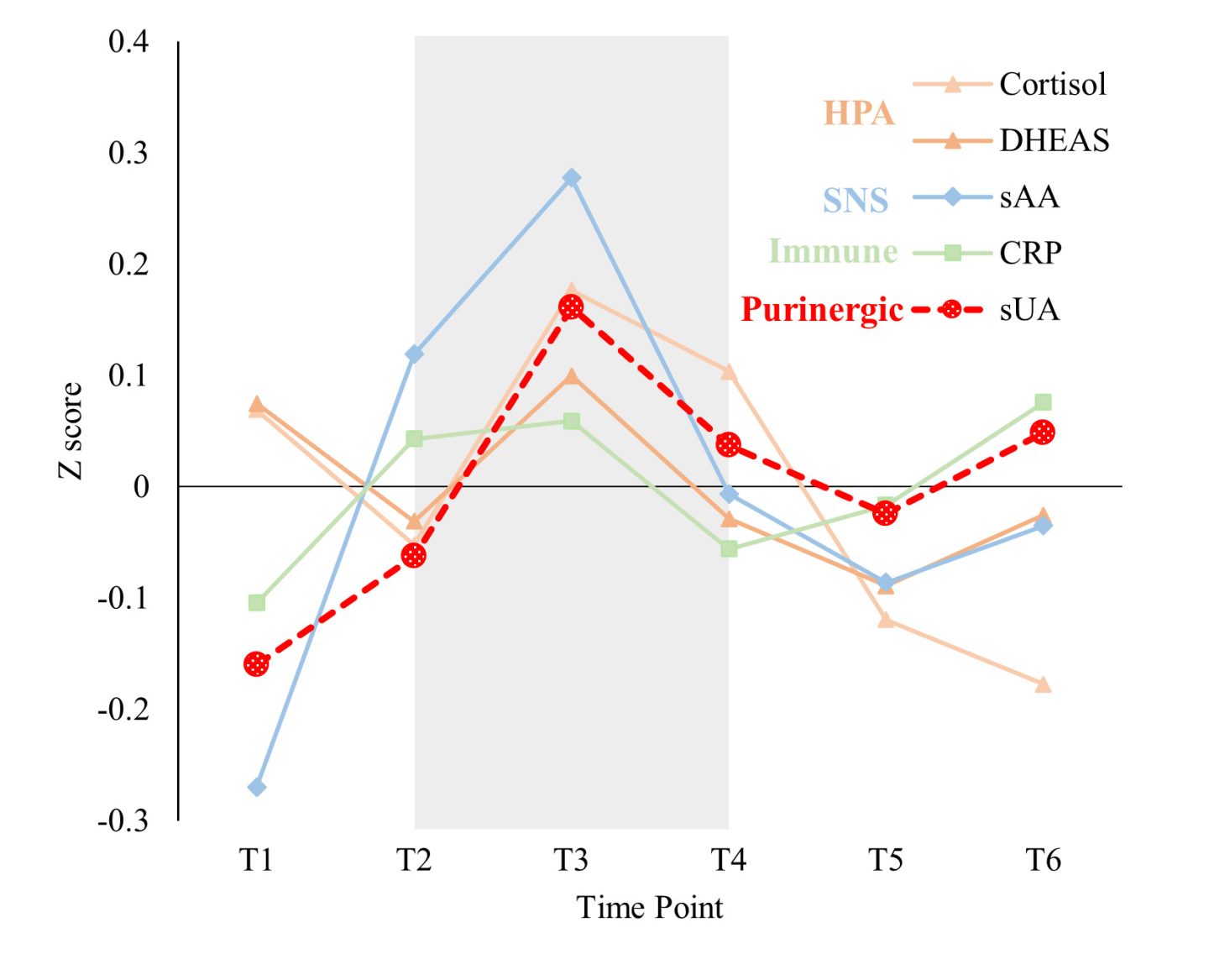Salivary Uric Acid Dynamics are Associated with Stress Response Hormones among African Americans in an Urban Sample
Goetz, S M et al. 2024. Psychoneuroendocrinology
ABSTRACT: Acute physiological responses to psychosocial stressors are a potential pathway underlying racial disparities in stress-related illnesses. Uric acid (UA) is a potent antioxidant that has been linked to disparities in stress-related illnesses, and recent research has shown that UA is responsive to acute social stress. However, an examination of the relationships between the purinergic system and other commonly measured stress systems is lacking. Here, we measure and characterize associations of salivary uric acid (sUA) with markers of hypothalamic-pituitary-adrenal (HPA) axis activation, sympathetic-adreno-medullar (SAM) axis activation, and acute inflammation. A community sample of 103 African Americans (33 male, 70 female) completed the Trier Social Stress Test to induce social-evaluative threat. Passive drool collected before, during, and after the stressor task provided salivary reactivity measures of UA (sUA), cortisol, dehydroepiandrosterone sulfate (DHEAS), salivary alpha amylase (sAA – a surrogate marker of SAM activity) and C-reactive protein (sCRP). Multiple regressions revealed that total activation of cortisol, DHEAS, and sCRP were each positively associated with higher total activation of sUA. Additionally, DHEAS reactivity was positively associated with sUA reactivity. Relationships between HPA-axis markers and sUA were especially observed among younger and male participants. Overall, findings suggest potential coordination of stress systems with sUA in response to acute stress, which may further the contributions of biological stress processes to racial health disparities.
Keywords: stress, trier social stress test, racial disparities, saliva, uric acid, cortisol, alpha-amylase, DHEAS, C-reactive protein
 Contact: Salimetrics (USA)
Contact: Salimetrics (USA)
